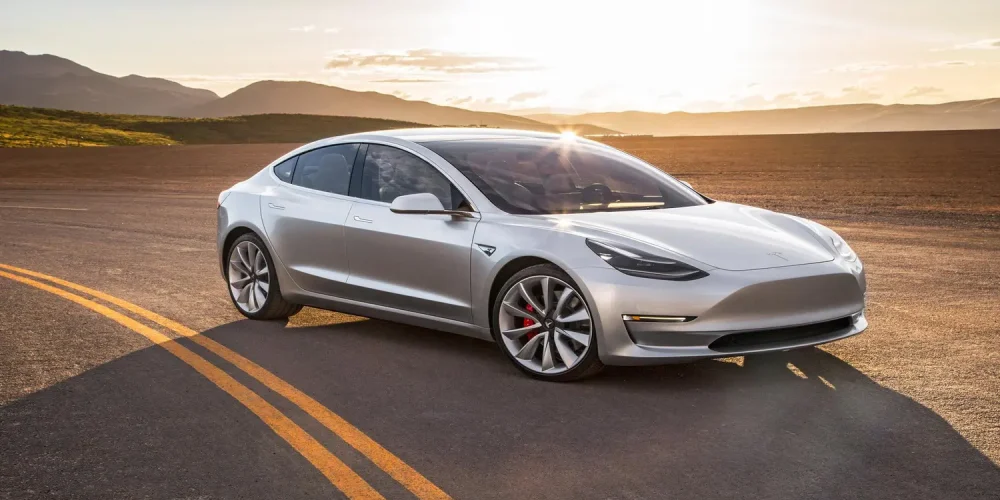
The Tesla Model 3 is one of the most popular electric vehicles worldwide. With Model 3, Tesla offers impressive performance, range, and cutting-edge technology. Whether you drive the Standard RWD, Long Range RWD, Long Range AWD, or Performance trim, understanding the different charging options and times can help you make the most of your EV ownership.
This will be your complete guide on how to charge a Tesla Model 3, explaining the charging port type, charging times, battery sizes, and charging cost.

Tesla Model 3 Charging Overview
Tesla Model 3 Battery Sizes
The Tesla Model 3 is presently available in 4 different trims. The standard RWD, Long range RWD, Long Range AWD, and an AWD Performance pack. Tesla offers different specifications for each trim, and all models feature distinct battery packs. The standard RWD has the smallest, while the Performance trim comes with a larger battery pack:

Tesla offers different battery capacities for Tesla Model 3 trims:
- Battery capacity: Standard RWD | 60kWh with an estimated EPA range of 321 miles.
- Long-range RWD | 77kWh with an estimated EPA range of 363 miles.
- Long-range AWD | 78kWh with an estimated EPA range of 346 miles.**
- Performance | 80kWh with an estimated EPA range of 309 miles.**
The maximum AC charging power, which Tesla disclosed for the Standard RWD variant, peaks at 7.7Kw). Tesla Model 3 Long-range RWD, Long-range AWD, and Performance variants are all capable of 11.5kW onboard AC charging. while DC charging peaks at 250 kW, except for the Standard RWD model, which supports only 170 kW.
Tesla Model 3 Charging Port Type
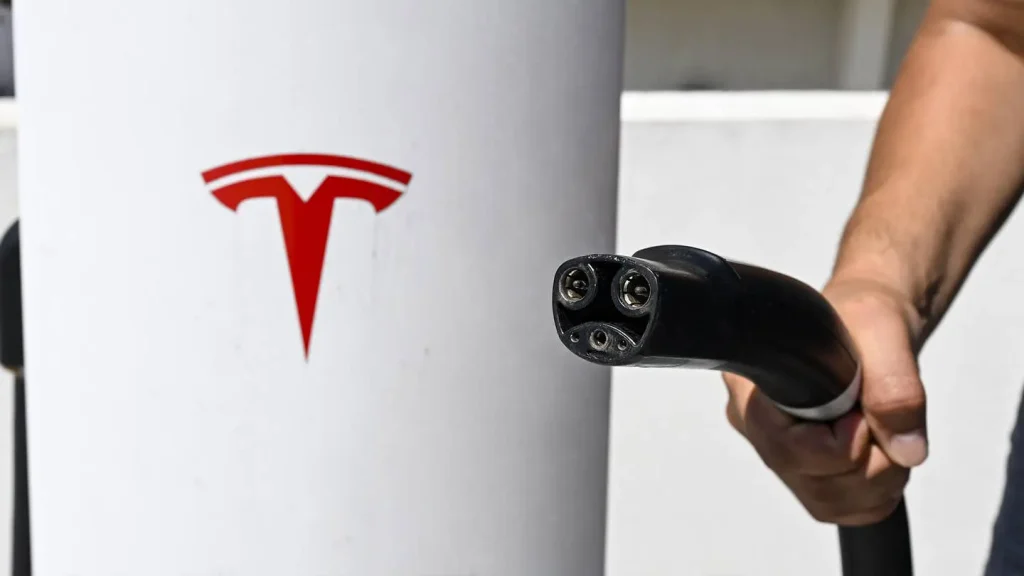
The Tesla Model 3 uses different connector standards depending on the region:
- North America: Tesla’s proprietary NACS (North American Charging Standard) port, compatible with Tesla Superchargers and an increasing number of third-party DC fast chargers.
- Europe & Asia: Type 2 (AC) and CCS2 (DC) connectors for both home and public charging.
This setup ensures the Model 3 can charge using almost any available charger, whether at home or while traveling.
Tip: If you’re charging at a non-Tesla public station, make sure to carry a CCS adapter (for NACS-based vehicles) to ensure compatibility.
For a comparison or to understand the difference between CCS and NACS, read this great article: NACS Vs CCS : What It Means For EV Owners? – DUEVOLT
How Long Does It Take To Charge a Tesla Model 3
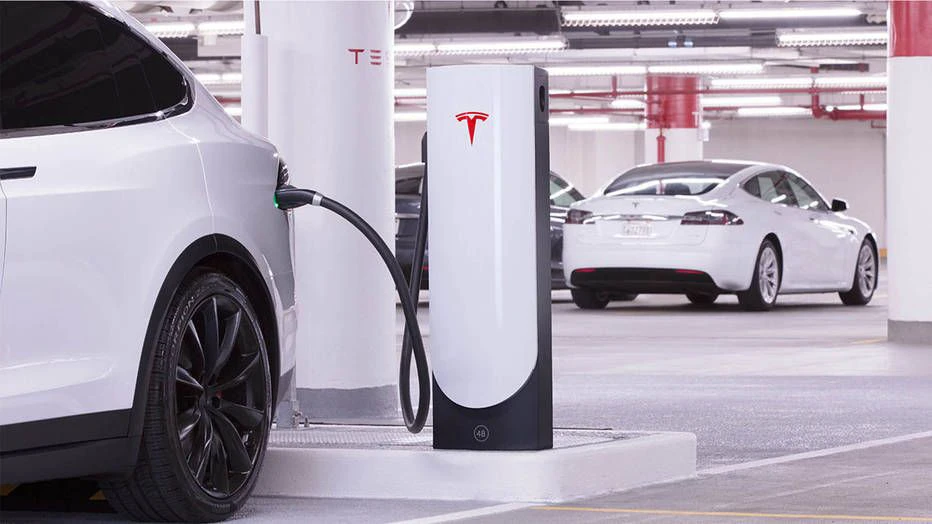
All Tesla Model 3 variants support Level 1 (120V), Level 2 (240V), and DC fast charging (Supercharging). Charging speed and time depend on the charger type, battery capacity, and trim level.
Here’s a quick summary of how each charging level works:
Level 1 EV Charger (NEMA 5-15, 120V)

Level 2 Charger (NEMA 14-50 48A)

Tesla Supercharger / CCS1 charging stations 170/250KW

Tesla Model 3 standard is limited to 170 KW DC fast charging, where long-range and performance trims can utilize the 250KW of superfast charging speed.
Home Charging Options for Tesla Model 3: Best option to choose
Home charging a Tesla Model 3 is simple, convenient, and cost-effective. There are 2 options that you can choose from. The first option is a 120V standard charger that only provides 1.76KW of charging power. The second and recommended option is a 240V AC level 2 charger. You can plug in overnight and start each day with a full battery.
Level 1 Charging (Standard Outlet)
You can charge your Tesla Model 3 using a standard 120V household outlet, also known as Level 1 charging. This method is slow and best suited for light daily driving needs. It can take over 40–50 hours to fully charge, depending on the trim.
Level 2 Charging (Home Wall Connector or 240V Outlet)
For faster home charging, most Tesla owners install a Wall Connector or use a 240V outlet (Level 2). It typically charges the battery overnight in 6–8 hours.
Public Charging Options for Tesla Model 3
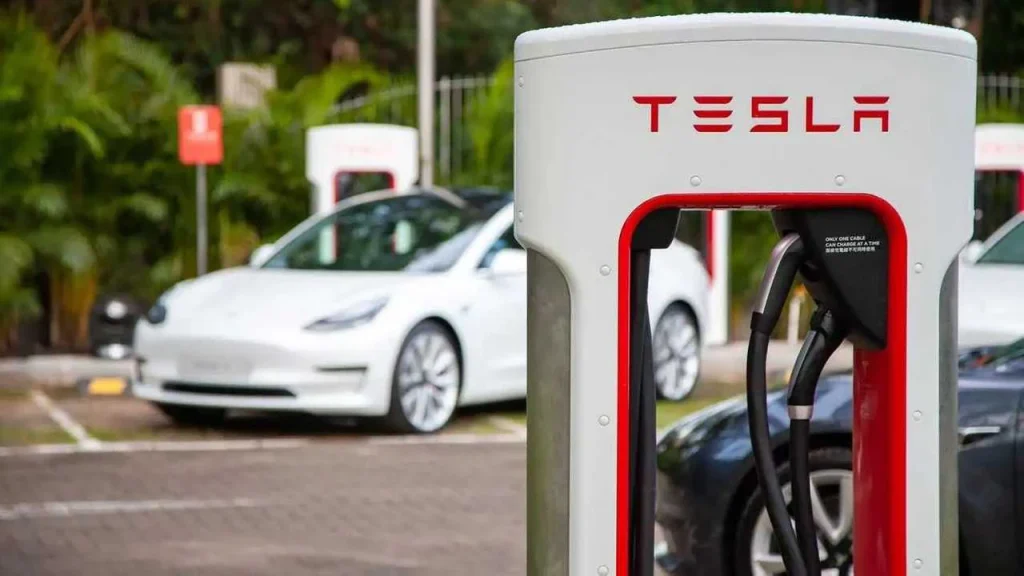
You can have multiple charging options in public. Unlike the typical AC home charger, you have access to fast DC chargers. If you’re on the road, Tesla’s Supercharger network offers the fastest and most reliable charging experience. There are over 55,000 Superchargers worldwide, and newer V3 Superchargers can deliver up to 250 kW, enabling rapid charging for the Model 3.
You can also use public Level 2 AC stations (like ChargePoint or EVgo) or third-party DC fast chargers that support the CCS standard (for international markets).
How Much Does It Cost to Charge A Tesla Model 3
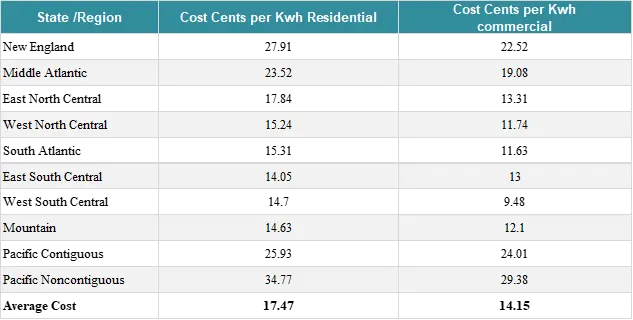
The cost of charging a Tesla Model 3 can vary depending on the electricity cost in your region. Please keep in mind that each region has different electricity pricing, which keeps updating each year. You can always look at the updated Electricity cost on the EIA website.
Average Home Charging Cost for Tesla Model 3

Average Charging Cost at Public Charing station

Public charging stations like Tesla Superchargers or other DC fast chargers usually cost more than charging at home because of added network and maintenance fees. Supercharger prices can vary depending on location and time of day, but they generally range from $0.30 to $0.50 per kWh, which is about twice the average home rate.
In simple terms, a full charge at a Supercharger can cost anywhere between $25 and $40, depending on your Model 3 variant and local pricing. For most owners, the smartest approach is to charge at home for daily use and use Superchargers occasionally when traveling or on long trips.
Conclusion
It’s simple to cope with how to charge a tesla model 3 is simple and can be done almost anywhere, at home, at work, or using Tesla’s vast Supercharger network. Having a Level 2 AC charger is recommended for home charging, as it significantly reduces charging time compared to a slow Level 1 AC charger. Although using public DC chargers costs you twice as much as a conventional home charger, it’s cheaper than filling up a gas tank.
